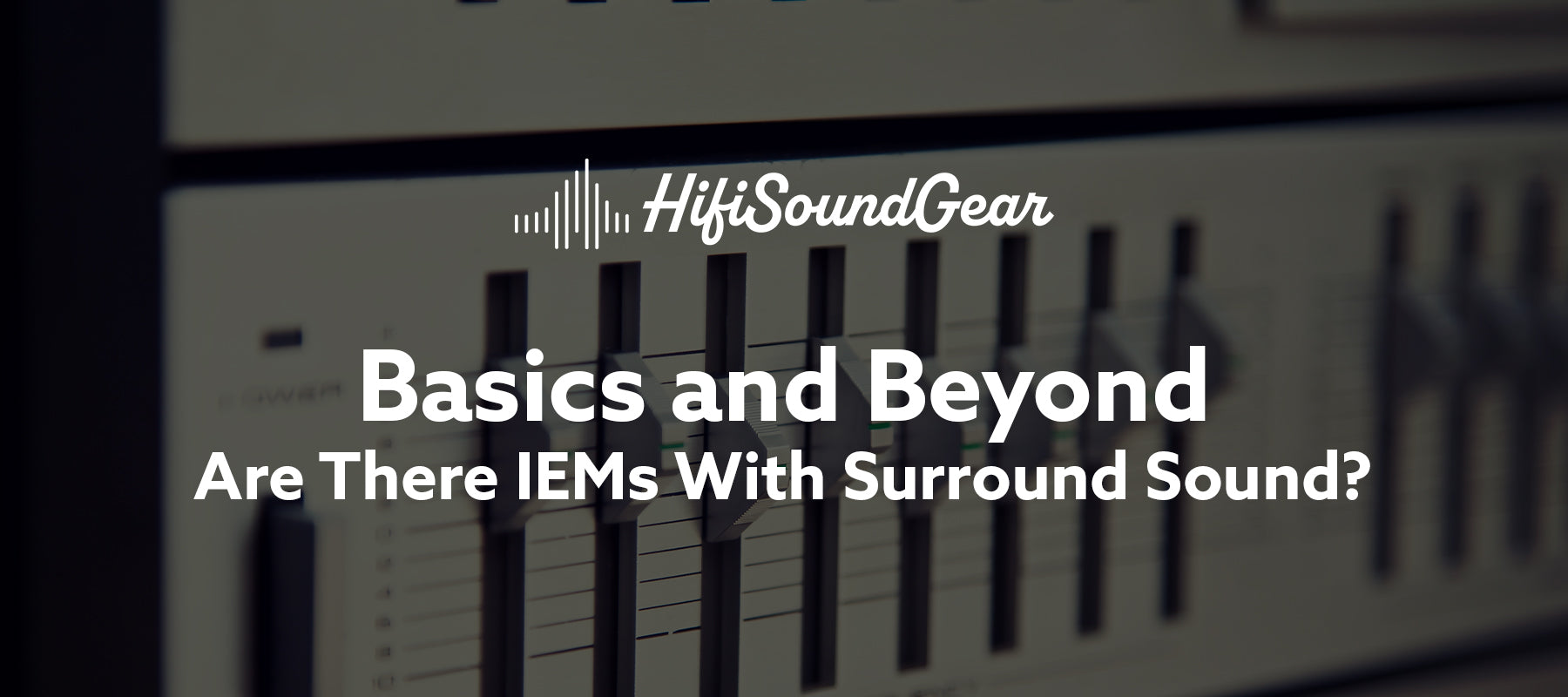
Are There IEMs With Surround Sound?
Have you ever wondered how those tiny in-ear monitors (IEMs) can create a soundstage that feels bigger than your living room? Here's a mind-bending fact: your brain can be fooled into perceiving sound from any direction using just two drivers!
While traditional surround sound systems might have you swimming in a sea of speakers, modern IEMs are performing some seriously impressive acoustic wizardry.
Let's dive into the world where pocket-sized audio meets panoramic sound!
Understanding True Surround Sound vs. Virtual Surround

At its core, traditional surround sound relies on multiple physical speakers positioned around the listener - think 5.1 or 7.1 systems where each number represents another speaker trying to sneak into your room. But IEMs? They're working with some serious space constraints. You can't exactly fit a home theater in your ear canal (though some audiophiles might try!).
This is where the magic of psychoacoustics comes into play. Our ears and brain are constantly processing three key spatial cues:
- Interaural Time Difference (ITD): The tiny time gap between when sound hits each ear
- Interaural Level Difference (ILD): The variation in volume between ears
- Head-Related Transfer Function (HRTF): How your outer ear's shape filters sound
IEM manufacturers leverage these natural processes to create virtual surround sound that can feel remarkably convincing. It's like having a home theater that fits in your pocket!
Virtual Surround Sound Technologies in IEMs

Modern IEMs don't just rely on hopes and dreams to create surround sound - they're backed by some serious technological muscle. Leading virtual surround technologies like Dolby Atmos, DTS Headphone:X, and Sony 360 Reality Audio are the secret ingredients in this spatial audio soup.
These systems use sophisticated Digital Signal Processing (DSP) to manipulate audio signals in real-time. Think of DSP as a tiny sound architect, carefully crafting the audio to fool your brain into perceiving sound from specific directions. It's like having a sound magician performing tricks right in your ears!
Head-tracking technology takes things even further. By monitoring your head position, modern IEMs can maintain a stable soundstage even as you move around. It's like having a virtual concert hall that stays put while you bob your head to the beat!
Binaural Audio: The Secret Sauce of IEM Surround Sound
If virtual surround sound is the magician, then binaural audio is the ultimate trick up its sleeve. This recording technique uses dummy heads (yes, actual artificial heads with microphones for ears) to capture audio exactly as human ears would hear it. When played back through IEMs, the result is uncannily natural spatial audio.
Binaural audio works exceptionally well with IEMs because they can deliver sound directly to your ear canals, just as it was recorded. This direct coupling creates an intimate listening experience that can make you forget you're wearing IEMs at all. Gaming and VR applications particularly benefit from this technology - nothing says immersion like hearing footsteps creep up behind you!
Top IEMs That Excel at Spatial Audio (2025)

When it comes to spatial audio performance, not all IEMs are created equal. The best performers typically feature:
- Advanced driver configurations that maintain phase coherence (Empire Ears Legend EVO)
- Carefully tuned crossovers for seamless frequency transitions (THIEAUDIO Monarch MKIII)
- Exceptional instrument separation capabilities (ex. FiR Audio Xenon 6)
- Wide and deep soundstage presentation (ex. 64Audio tia Fourte)
While premium models might offer the ultimate in spatial audio performance, several budget-friendly options can still deliver impressive results. It's not always about how many drivers you can cram into an IEM - it's about how well they work together!
Optimizing Your IEMs for Surround Sound
Getting the most out of your IEMs requires some attention to detail. Proper fit is absolutely crucial - a good seal isn't just about isolation, it's about maintaining those precious spatial cues. Think of it like ensuring all the actors in your audio play are hitting their marks!
Compatible hardware matters too. A quality DAC and amp combo can help unlock your IEMs' full spatial potential. And don't forget about software settings - many virtual surround solutions offer customization options to match your specific hearing profile.
Here are some pro tips for maximizing spatial performance:
- Experiment with different ear tips to find the perfect seal
- Use high-quality audio sources whenever possible
- Enable any available head-tracking features
- Consider room calibration tools if available
Conclusion
The world of IEM surround sound is a perfect example of how big things can come in small packages. Through clever engineering, psychoacoustic principles, and cutting-edge virtual processing, today's IEMs can create surprisingly convincing surround sound experiences.
Whether you're deep in a gaming session or losing yourself in a spatial audio mix, the right IEM setup can transport you into a truly three-dimensional soundscape.
The best part? This technology keeps getting better. As virtual surround processing becomes more sophisticated and IEM designs continue to evolve, we can expect even more convincing spatial audio experiences in the future.
Ready to give your ears a taste of audio in all its spatial glory? Your personal pocket-sized concert hall awaits!
Elevate Your Listening Experience With These Related Articles
Enjoyed this article? Feel free to check out these related topics!

